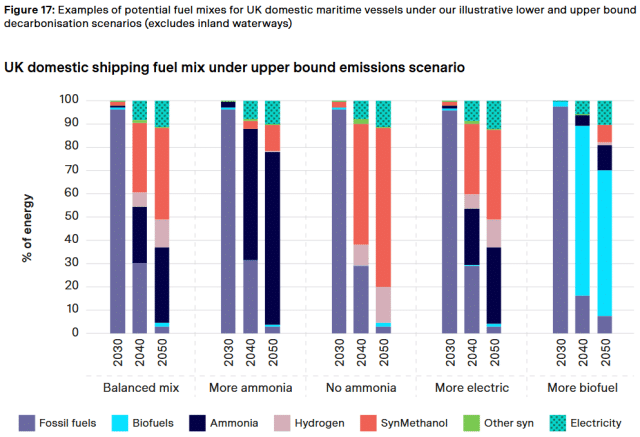UK Coastguard, Department of Transport: preparing for ammonia-fueled vessels
By Julian Atchison on April 25, 2025
Coastguard sets out timelines, processes for engaging owners and operators of ammonia-fueled ships
Historically, the UK’s Maritime and Coastguard Agency (MCA) regulated vessels over 500 gross tons carrying ammonia as cargo. Now, with the rise of maritime ammonia fuel, MCA works with operators and classification societies to regulate vessels using ammonia as a fuel, under the interim guidelines approved last December. MCA is also a direct contributor to the development of these guidelines at the IMO.

Click to enlarge. The UK’s Maritime and Coastguard Agency has outlined the approval process for owners and operators of future ammonia-fueled vessels, and encourages early engagement. Source: Maritime and Coastguard Agency (MCA).
Under current IMO regulations, operators of any future ammonia-fueled vessel need to submit an “Alternative Design Arrangement” for sign off by a Recognized Organization (RO), taking into account the overall risk of the project and the capabilities of the RO. MCA is one such Recognized Organization, and has recently set out timelines and processes for owners and operators of ammonia-fueled vessels to engage with them, in preparation for operations in UK waters. As a first step, MCA is encouraging interested stakeholders to reach out and set up an initial meeting, in which the process steps and submission expectations will be set out. As the engagement process is highly cyclical, early engagement will allow for better estimates of approval times, and for improving the quality of submissions.
Steps/activities to be completed as part of the overall process include submitting a “gap analysis” against the IMO interim guidelines (with requests for exemptions and/or equivalencies), safety case and engineering analysis, seafarer and crew training plans, outlining what land-based infrastructure will be required, and an assessment of availability of ammonia fuel (and to what certification level).
UK’s first Maritime Decarbonisation Strategy
As part of its first maritime decarbonization strategy, the UK Department of Transport has set out a pathway to reach zero fuel lifecycle GHG emissions by 2050. Five key policy areas were identified: regulating fuel use, pricing emissions, putting ZNZ requirements on vessel energy use at berth, increasing energy efficiency, and support for smaller vessels to decarbonize. The UK government anticipates that domestic regulation of ZNZ fuels will follow the implementation of the IMO’s new emission pricing scheme.

Click to enlarge. UK maritime fuel mix in the upper bound emissions scenario, with ammonia fuel in dark purple. Fig 17 from Maritime Decarbonisation Strategy (UK Department of Transport, 2025).
With very limited uptake by 2030, the strategy forecasts that ammonia fuel could account for 25% of the UK’s maritime fuel mix by 2040 in a “balanced” or “more electric” scenario, and 55-60% in a “more ammonia” scenario. In 2050, the uptake rises to 30% and 70% respectively. In a biofuels-dominated scenario, ammonia accounts for 10% or less by 2050. In both the balanced and more electric scenarios, the strategy forecasts a bigger role for e-methanol than ammonia in the UK.